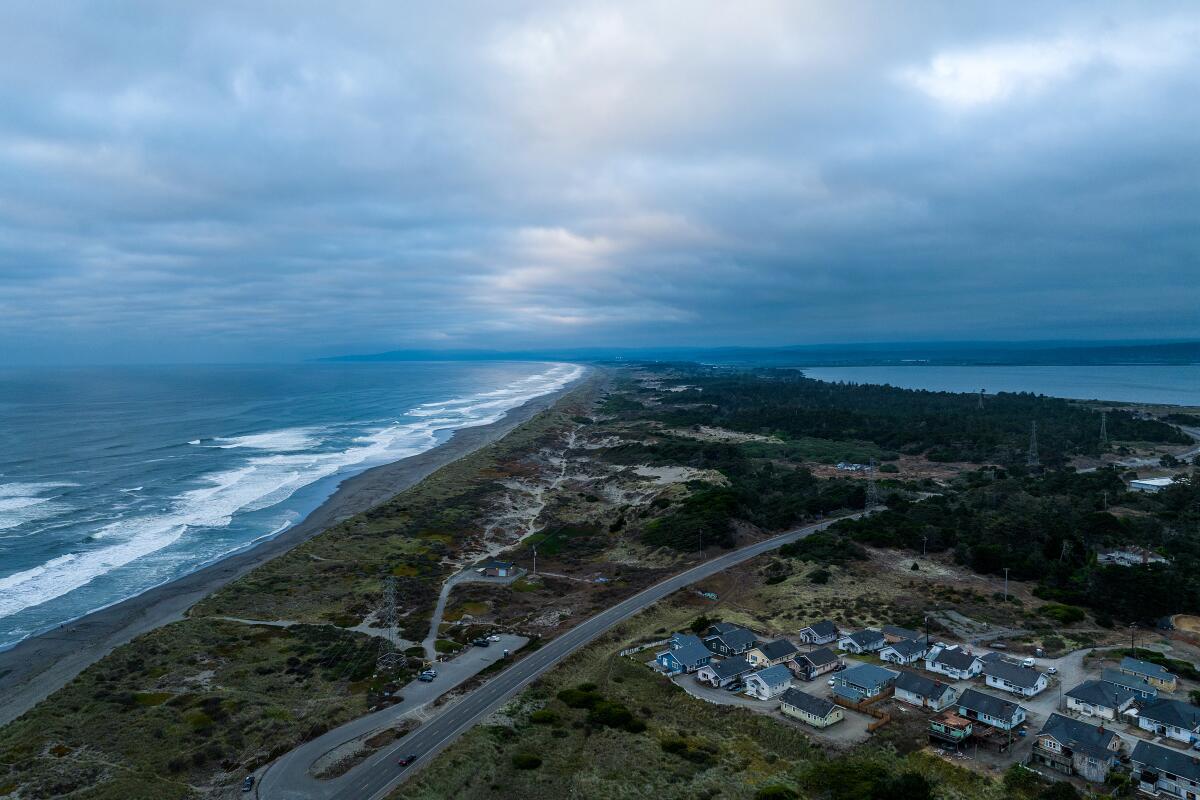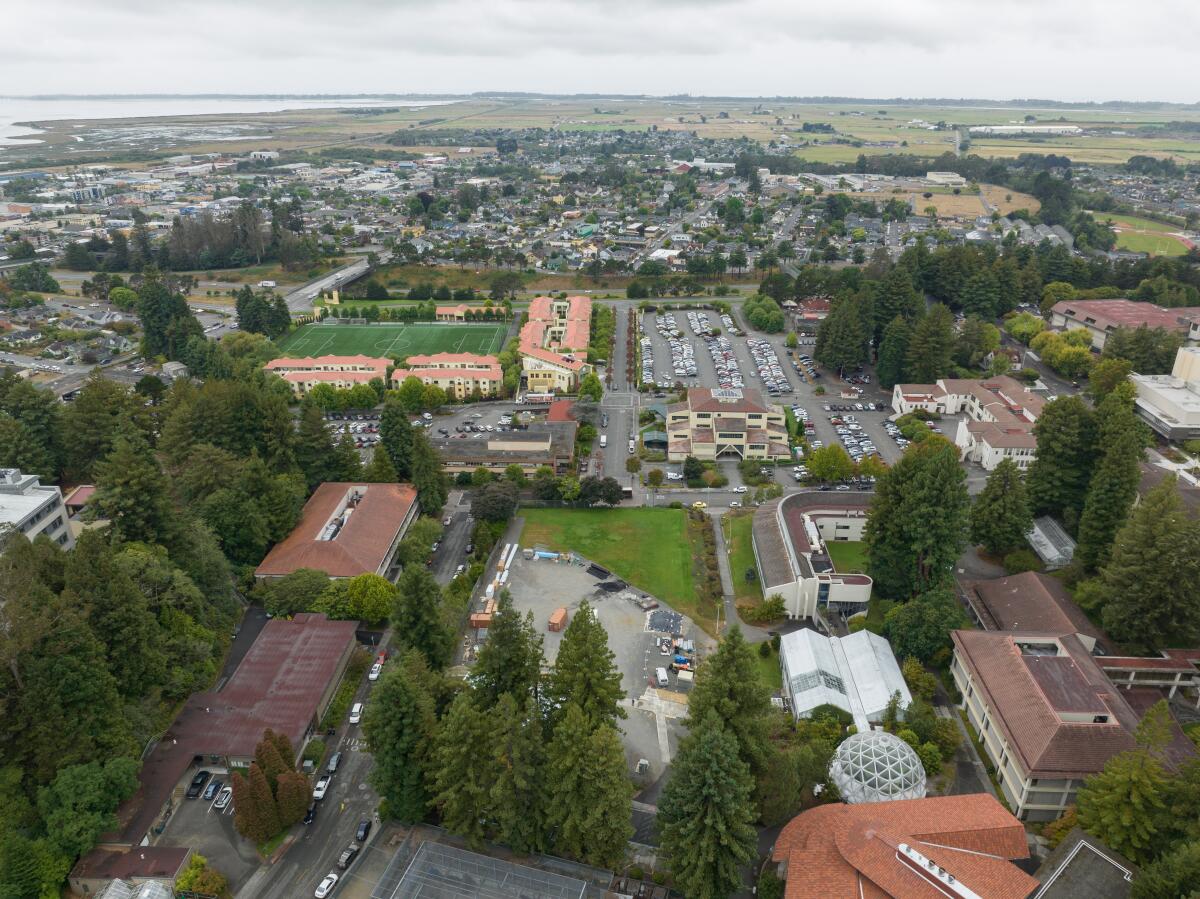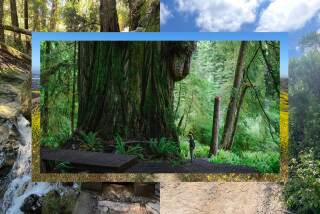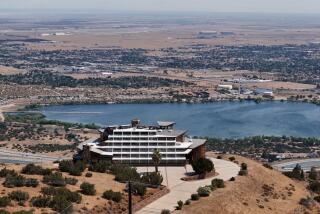We ranked the top 25 best places to retire in California for most people. Would you live here?

We all have a fantasy of where we want to retire.
To some, it might be amid the golf courses of Palm Springs. Others might dream about the coast, whether it be the charm of La Jolla, the boating culture of Newport Beach or the celebrity glitz of Malibu. Wait — what about a mountain cabin for skiing, or sunsets amid the rolling hills and vineyards of wine country?
But harsh reality has forced many Californians to settle on far more modest retirement hopes — whether it is simply staying put or finding a place where their retirement income and savings go further.
These questions are complicated by some of the existential questions facing the state: affordability, climate change and healthcare.
People over 65 are California’s fastest-growing age group, which means more seniors in the state are thinking about where to spend their retirement years.
While many younger residents have fled, the state’s senior population is projected to grow by nearly 3 million between 2021 and 2030, according to the Department of Finance.
The Times set out to rank 367 California cities in terms of fitness for retirement. The rankings were modeled for middle-income Californians willing to relocate within the state.
This is a decidedly subjective list, and it might not be for everyone. After all, each retirement dream is unique. Each location on the list has pros and cons — and none might be as nice as living your golden years exactly where you are, around family and friends, near the parks, churches, Ralphs and Starbucks you find so familiar.
Our analysis prioritized and gave similar weighting to four main factors:
- Climate: the number of days of extreme heat expected per year, based on projections for 2035 to 2064
- Health and wellness: a health index combining dozens of factors, including air quality, access to transportation and proportion of adults with health insurance — though not direct access to hospitals
- Recreation: the proportion of residents who have a park, beach or open space greater than 1 acre within a half-mile of their home
- Affordability: typical home prices and rental costs in the city
Because of these factors, many of our retirement spots are off the the beaten path, situated in less populated areas where housing prices are lower than in metro areas. They also leaned into cooler locations, given how climate change is causing extreme heat waves and posing health risks, particularly for older folks.
The rankings
1. Eureka, Humboldt County
The biggest city on California’s North Coast, with a population of about 30,000
Climate: 0 annual days above 100 degrees expected, 2035-2064 (1st percentile of 367 cities)
Health and wellness: Ranks around average (top 50% of all cities) in the health index
Recreation: Above average (top 20%) in access to parks — over 90% of people live within a half-mile of nearest park, beach or open space
Affordability: Typical home value: $419,000; typical rent for a single-family residence: $1,516
1. Arcata, Humboldt County (tied with Eureka)
A college town a few miles from Eureka, home to Cal Poly Humboldt
Climate: 0 annual days above 100 degrees expected
Health and wellness: Above average (top 40% of all cities) in health index
Recreation: Excellent (top 10%) in park access — over 95% of people live within a half-mile of nearest park, beach or open space
Affordability: Typical home value: $510,000; typical rent: $1,700
PROS: Coastal location, cooler temperatures, relatively affordable housing, close to breathtaking nature and beaches.
CONS: Far from any big cities. A drive from Los Angeles would take nearly 11 hours, and that is without any traffic (good luck with that!).

3. Benicia, Solano County
An exurb along the Carquinez Strait nestled in the outer Bay Area
Climate: 11 annual days above 100 degrees expected
Health and wellness: Excellent (top 10% of all cities) in health index
Recreation: Excellent (top 10%) in park access — over 95% of people live within a half-mile of nearest park, beach or open space
Affordability: Typical home value: $820,000; typical rent: $2,406
PROS: Moderate climate, access to wilderness and the San Joaquin River, and relatively close to Bay Area population centers, wine country and Sacramento.
CONS: Traffic, adjacent to sky-high Bay Area housing and living costs. Still a hike to many destinations.
4. Big Bear Lake, San Bernardino County
A mountain resort town within a relatively short drive of Los Angeles
Climate: 0 annual days above 100 degrees expected
Health and wellness: Above average (top 40% of all cities) in health index
Recreation: Average (top 50%) in park access — over two-thirds of people live within a half-mile of nearest park, beach or open space
Affordability: Typical home value: $587,000; typical rent: $2,000
PROS: Glorious mountain location, perfect for hikes, water sports and skiing. Alpine feel but less than an hour to suburbia and less than two hours from Los Angeles.
CONS: May be a bit isolated, especially for those who move to homes outside of downtown Big Bear. Snow storms, mudslides and wildfires are a constant danger.
5. Signal Hill, Los Angeles County
A hilly, 2.2-square-mile town of 11,000 residents, surrounded by the city of Long Beach
Climate: 4 annual days above 100 degrees expected
Health and wellness: Above average (top 40% of all cities) in health index
Recreation: Excellent (top 10%) in park access — over 95% of people live within a half-mile of nearest park, beach or open space
Affordability: Typical home value: $792,000; typical rent: $2,082
PROS: Central location, great views of the harbor and city, and close to beaches, marinas and attractions such as downtown Long Beach, Belmont Shores and Bixby Knolls.
CONS: Small, compact location and not far from industry, including the ports of Long Beach and Los Angeles. Still some oil fields nearby.
6. Fair Oaks, Sacramento County
A tony Sacramento suburb overlooking the American River and parkland
Climate: 56 annual days above 100 degrees expected
Health and wellness: Very good (top 15% of all cities) in health index
Recreation: Good (top 40%) in park access — over 80% of people live within a half-mile of nearest park, beach or open space
Affordability: Typical home value: $616,000; typical rent: $1,992
PROS: Access to nature with nearby Sacramento River, plenty of open space and parks.
CONS: Exposure to extreme heat with changing climate, relatively expensive for the area.
7. Crescent City, Del Norte County
The last major California coastal city before hitting Oregon
Climate: 0 annual days above 100 degrees expected
Health and wellness: Poor (bottom 20% of all cities) in health index
Recreation: Good (top 40%) in park access — over 75% of people live within a half-mile of nearest park, beach or open space
Affordability: Typical home value: $361,000; typical rent: $1,500
PROS: Much lower cost of living than most California cities, easy access to redwood forests and the Pacific Ocean.
CONS: Extremely remote by California standards, with few attractions compared with most urban and suburban areas. Faces seismic and tsunami danger.
8. Grass Valley, Nevada County
A Sierra mountain town with Gold Rush history, long a popular retirement destination
Climate: 19 annual days above 100 degrees expected
Health and wellness: Below average (bottom 40% of all cities) in health index
Recreation: Around average (top 50%) in park access — around half of people live within a half-mile of a park, beach or open space
Affordability: Typical home value: $516,000; typical rent: $1,737
PROS: Great location for hiking, skiing, camping and California history, with proximity to Lake Tahoe.
CONS: Cold, snowy winters (though some retirees prefer such conditions) and long distance from major cities. Fire danger.
9. Emeryville, Alameda County
The city between the Bay Bridge and Oakland has a suburban feel
Climate: 1 annual day above 100 degrees expected
Health and wellness: Excellent (top 10% of all cities) in health index
Recreation: Excellent (top 10%) in park access — over 95% of people live within a half-mile of park, beach or open space
Affordability: Typical home value: $524,000; typical rent: $2,935
PROS: Proximity to population centers, workable public transit and access to San Francisco, Berkeley and Oakland. Good shopping options.
CONS: Often foggy, windy and cold, with exposure to Bay Area cost of living. Some consider it too suburban.
10. Belmont, San Mateo County
A small Silicon Valley/San Francisco Peninsula suburb with superb ratings on health and quality-of-life factors
Climate: 2 annual days above 100 degrees expected
Health and wellness: Stellar (top 5% of all cities) in health index
Recreation: Very good (top 15%) in park access — over 90% of people live within a half-mile of park, beach or open space
Affordability: Typical home value: $2,145,000; typical rent: $2,731
PROS: Access to Bay Area cities, excellent quality-of-life metrics such as schools and healthcare. Close to San Francisco airport.
CONS: High cost and exposure to Silicon Valley traffic.
Deciding on the best retirement destinations in California is a subjective and possibly foolhardy exercise. This analysis assumes that practical factors such as affordability are most salient, and that less tangible factors such as culture and entertainment are less important. Still, this ranking takes all those factors into consideration.
Update: You wanted more
After this list was published, some readers asked for additional cities that ranked high in our analysis. So here they are:
11. Atascadero
The Central Coast city near San Luis Obispo is close to hiking and beaches as well as wine country.
12. Alameda
The Bay Area city near Oakland has long been a favorite for families. Pricey, but commuting options to San Francisco are not bad and the central location helps.
13. Carmichael
A leafy Sacramento suburb with American River access and a large golf course. Several public parks are nearby. Affordable to rent or buy (compared to most California cities).
14. Rosemont
A dense suburb of Sacramento, home to many working professionals. Solid park access and close to downtown Sacramento.
15. Martinez
A quaint downtown, waterfront location and train service, and decent prices (for the Bay Area) have made this city a favorite for home buyers.
16. Ukiah
The biggest city in Mendocino County, Ukiah is close to woods and outdoor spaces and not far from the coast. It’s still pretty small. An hour from Santa Rosa and two hours from San Francisco. Housing prices are rising but still cheaper than the Bay Area.
17. Albany
A small bayside city near Berkeley. Excellent access to parks and a climate that will be more resilient than most to climate change. Relatively expensive cost of living.
18. Rancho Santa Margarita
Orange County suburbia at its finest if that lifestyle is for you. Quiet, good schools, close to a lot of nature, toll roads make commuting easier but more expensive.
19. Sonora
A gold country town in Tuolumne County with a historic downtown area. Excellent access to nature and the Sierra Nevada mountains, but it could also be too remote for some retirees.
20. San Bruno
Prime Peninsula location between San Francisco and Silicon Valley. Close to so much, including the airport, but housing prices are high.
21. Oakland
A vibrant city with Bay Area culture and lower prices than nearby San Francisco. Good transit options to lots of entertainment and arts.
22. Walnut Creek
An upscale Contra Costa County city known for its prime shopping district, good schools and nice but expensive housing. Also a job center with Bay Area Rapid Transit access.
23. Chico
Butte County city known for its college town vibes, glorious parks and rural hipster feel. Region was hit hard by recent fires but has also gained fans looking to get out of the big city.
24. Coalinga
Located in the west San Joaquin Valley, Coalinga has been growing fast. Affordability is a big plus. But it’s fairly isolated and can get very hot. About an hour drive to Fresno and two hours to the coast.
25. South Pasadena
Long a favorite for families because of its excellent schools and proximity to downtown L.A. Housing is expensive but the city boasts a central location, rail access, family-friendly amenities and an array of restaurants.
A highly personal choice
Though retirement preferences can vary greatly from person to person, those choosing a retirement locale would do well to accommodate change as they age, said Hal Hershfield, an associate professor at the UCLA Anderson School of Management.
Psychologically, “we don’t really know what our preferences are until we jump into something, and then they change,” he said. “Life is very different between 65 and 75 compared to 85 and 95,” so planning for retirement requires accommodation for flexibility.
Proximity to family is often a “huge factor” for retirees, he said. Additionally, “people start prioritizing emotionally meaningful goals” like a sense of community, he said, so moving far from home could be a challenge without an infrastructure for building connections.
There is “real diversity in health and well-being” for retirees, Hershfield said, noting that some people are sedentary at 65, and others are running marathons into their 90s.
With that in mind, we adjusted the rankings to emphasize two factors that might be of outsize importance to retirees: price and health.
Price-conscious retirees
Giving more weight to home prices and rental rates in California cities adds new cities to the list. Eureka and Arcata are still at the top of the list, but they are joined by smaller towns such as Coalinga (Fresno County), Oroville (Butte County), Ridgecrest (Kern County), Anderson (Shasta County) and Ukiah (Mendocino County).
Housing costs are an important factor for seniors, as more than 17 million (or roughly one in three) adults over the age of 65 are economically insecure, with incomes below 200% of the Federal Poverty Level, according to the National Council on Aging.
Climate and health
Prioritizing the health performance of each city — a metric informed by factors like access to parks, educational attainment, housing and much more — also yields a different outlook. This approach adds more expensive cities to the list, including Albany (Alameda County), Sausalito (Marin County), Burlingame (San Mateo County), Walnut Creek (Contra Costa County), Larkspur (Marin County), San Carlos (San Mateo County) and Alameda.
The top city in this ranking, though, is still Eureka.
High temperatures also factor into health. Heat waves are most harmful to seniors and children, according to the California Department of Public Health. A September 2022 heat wave killed about 500 Californians, excess mortality analysis from the department revealed.
This analysis was based on data from the California Healthy Places Index, a metric devised by the Public Health Alliance of Southern California.
Paradise out of reach
As a final exercise, we used our data analysis to examine the least accessible places to retire.
It yielded some surprising results. Who would not want to spend their golden years with Oprah, Harry and Meghan in Montecito, or on the sand in Malibu, or a day of hiking and golf in Rancho Santa Fe?
But those places ranked very low on the list because of sky-high prices and issues around climate change (such as fire risk and coastal erosion).
The bottom five cities were mostly in Southern California with high housing costs, making it far too expensive for a typical California retiree:
- La Cañada Flintridge, Los Angeles County — a quiet L.A. suburb in nearby foothills with pricey homes
— 17 annual days above 100 degrees expected; top 10% in health index; top 40% in park access; typical home value: $2,333,000; typical rent: $4,596 - Palos Verdes Estates, Los Angeles County — a coastal community within reach of L.A.
— 0 annual days above 100 degrees expected; top 5% in health index; top 5% in park access; typical home value: $2,706,000; typical rent: $6,882 - Montecito, Santa Barbara County — an exclusive beach locale near Santa Barbara
— 0 annual days above 100 degrees expected; top 10% in health index; bottom 40% in park access; typical home value: $4,921,000; typical rent: $9,400 - Rancho Santa Fe, San Diego County — affluent community north of San Diego
— 12 annual days above 100 degrees expected; top 20% in health index; bottom 20% in park access; typical home value: $4,198,000; typical rent: $14,291 Malibu, Los Angeles County — a famously luxurious beach town north of Los Angeles
— 2 annual days above 100 degrees expected; top 10% in health index; top 40% in park access; typical home value: $3,402,000; typical rent: $15,739
Glossary of metrics: The extreme heat data come from the California Healthy Places Index: Extreme Heat Edition. It relies on a projection of the state’s climate from 2035 to 2064. The percentile listed for health index is taken directly from the HPI, an index combining 23 variables for each city, including the park access metric, which was taken from the HPI data set. The typical home values come from Zillow’s Home Value Index for all residences and reflect the 35th to 65th percentile. The typical rent values come from Zillow’s Observed Rent Index, which estimates the average of all rental properties in an area, listed and rented.
More to Read
Sign up for This Evening's Big Stories
Catch up on the day with the 7 biggest L.A. Times stories in your inbox every weekday evening.
You may occasionally receive promotional content from the Los Angeles Times.











